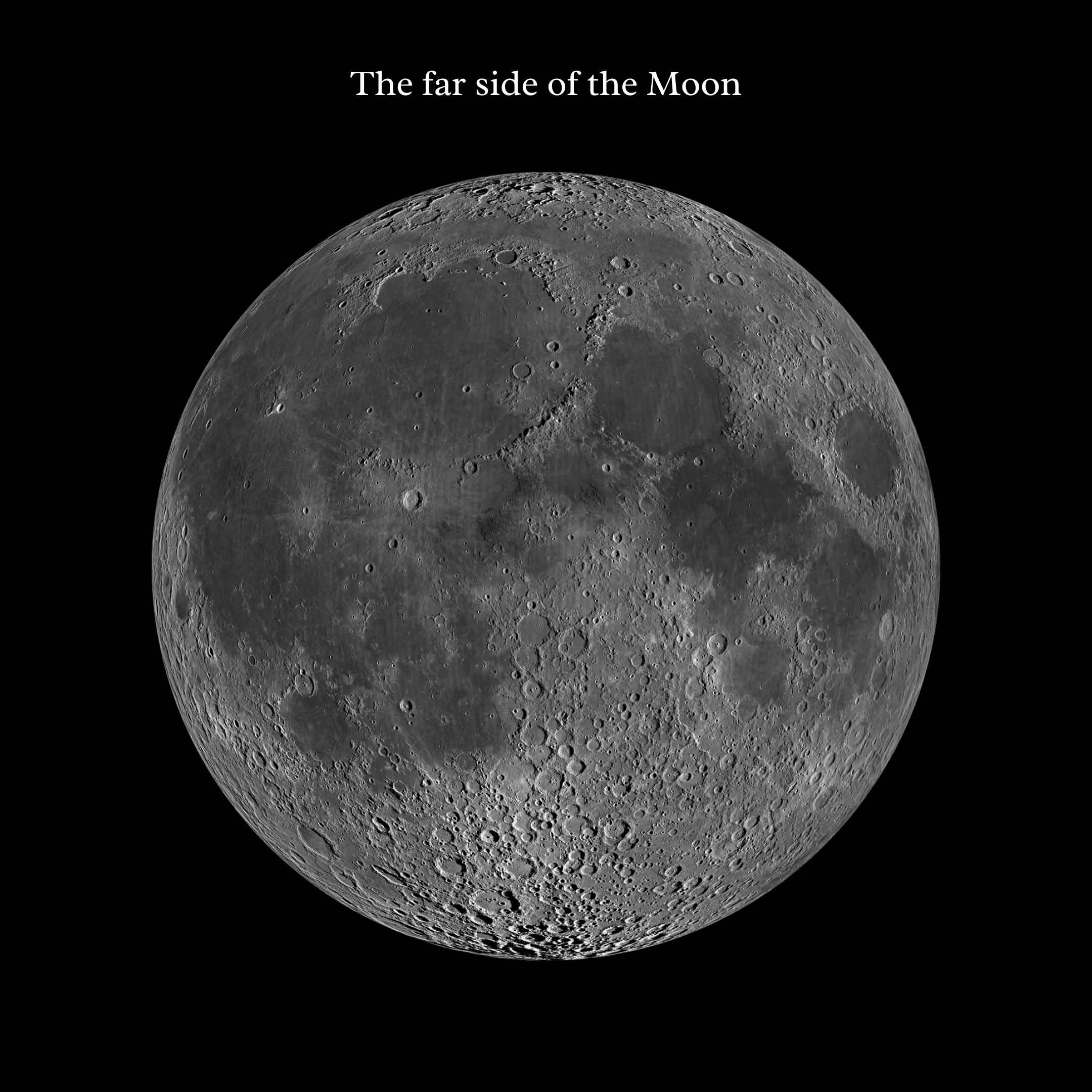The Names on the Moon
"The Names on the Moon" is a stroll on the lunar surface through its feature names.
We always see the Moon portrayed as a muted grey sphere orbiting planet Earth, marked by dark spots
visible to the naked eye. We can zoom into its surface through photographic and satellite images,
exploring the most famous landing sites such as the Sea of Tranquility (where humans first landed on
the Moon with the Apollo 11 spacecraft). But how many other places on the Moon do you know?
When I stumbled upon a close-up image of an area with marked sites, I was immediately fascinated by
the various names popping out from craters and mountain ranges: several of these physical
characteristics had some connections with the topography of Earth. Naming things is a part of
general human communication using words and language: the names of streets, cities, and countries
are intertwined with the historical development of societies and cultures. But what’s the procedure
for naming satellites, stars, and planets?
Full research ↗


1:1 Million-Scale Lunar Map (LAC 22). Gazetteer of Planetary Nomenclature / Image credit: NASA/GSFC/ASU
The International Astronomical Union (IAU) Working Group for Planetary System Nomenclature (WGPSN) is the zation in charge of naming celestial bodies. Founded in 1919 in Brussels, since 1935 has been officially assigning names to The Moon surface features, with new entries or revisions listed every year. Examples of lunar features are: Mountains, Valleys, Craters, and Marias—wide flat areas that look like seas from a distance but are probably solidified molten rock. On its website we can find various datasets listing the nomenclatures of planets, asteroids, rings, and satellites of our Solar System.

















Descriptor terms: Chart of landform types created in 1979 by Anne Gifford, Images: LROC viewer
There are 9,050 identified features on the Moon:
• 78% are named as Satellite features, meaning that shares the name of an associated feature like
Craters, Marias, etc.
• 17.5% are classified as Craters (a circular depression on the surface), followed by 1.2% of
features identified as Rimae (Fissure)
• 3 features are unique: there is only one Albedo (a geographic area distinguished by amount of
reflected light), one Oceanus (a very large dark area), and only one Palus (swamp)
I grouped the data about lunar features based on the assigned names, with additional information on
the profession, lifespan, origin, and source of the nomenclature.


Each name can be associated with letters to mark related features: e.g. Crater Aliacensis has 13 associated features identified as Aliacensis A, Alicensis B, etc.
In almost 90 years of work, the IAU has chosen 1,852 unique names to identify lunar
features. Each features is identified with a conceptual and physical description:
• Name
• Name description
• Name source reference
• Name ethnicity
• Feature type
• Diameter
• Lat/Long coordinates
• Year of approval
Interactive spreadsheet
Feature names can be organized in:
• Proper nouns, like “Soraya”, a Persian female name
• People, such as notable scientists, astronomers, historians,...
• Places, like “Montes Carpatus”, named after the Carpathian mountains
• Astronaut-named features, like “Victory”, which is located on the Apollo 17 site
Interactive Alluvial diagram made with Flourish

The radial bar chart displays 1,852 unique lunar feature names by ethnicity (ethnic/cultural group or country). The label "American" collects names registered in the original dataset as “American", "United States”, while United Kingdom stands for “British", "England", "Scottish", "Great Britain".

Photograph of the far side of the Moon by Orion spacecraft during the Artemis 1 mission.

Here are the top 10 ethnicities on the Moon:
• 17.8% American
• 13.8% Germany
• 11.9% United Kingdom
• 9.6% France
• 5.7% Soviet
• 5.2% Italy
• 4.9% Greek
• 3.8% Russia
• 3.8% Latin
• 2.5% The Netherlands

When analysing the data related to People names (82%), we notice how the larger majority of persons were Astronomers (33.6%), Physicists (14%), or Mathematicians (12.4%). These notable persons were often active in more than one field of work: e.g. Astronomer and Mathematicians (3.1%), or Astronomer, Mathematician, Philosophers (0.1%). The People lived between the year 700 B.C. (e.g. Greek poet Hesiod) and nowadays. Some are still alive in 2022 (e.g. Valentina Vladimirovna Tereshkova, Soviet astronaut). 96 People were awarded a Nobel.

Linear dendrogram showcasing American names made with RAWGraphs
The procedure applied to name lunar features looks more structured and inclusive if compared to
individual or collective decisions taken by mayors or province administrators. Also the Task Group
for Lunar Nomenclature is composed of members with different nationaliies.
The International Astronomical Union rules that:
• Names should be expressed in the language of origin;
• Where appropriate, using an equitable selection of names from ethnic groups, countries, and gender
on each map;
• A higher % of names from the country planning a landing is allowed on landing site maps;
• No names having political, military or religious significance may be used, except for names of
political figures prior to the 19th century;
• For commemoration on planetary bodies, persons must have been deceased for at least three years
before a proposal may be submitted.
Full research on Canva
About
"The Names on the Moon" is a project developed during the
data journalism training program organized by Dataninja and the European Data Journalism Network.
(October 2022-February 2023).
Data gathered on October 29, 2022. Work finalised in February 2023.
Year
2023